The COVID-19 scare has brought a lot of new people into the ranks of gun ownership over the last month, many of whom have never owned a firearm before. If this defines you, we at RevolverGuy.com would like to say, “welcome aboard,” and offer our help as you try to get the answers for the questions that you have as a new gun owner. We’re here to help, even if your gun isn’t a revolver (don’t worry, we like you anyways—Ha!).
Changes
Some of you have figured this out already, and others are just starting to, but buying your first gun changes things. When you bring a gun into your life and home for the first time, it’s no longer going to be “business as usual.”
We don’t want that to frighten you, we just want you to embrace it. Things are going to change for you, and if you’re willing to make the right moves, they will change for the better. You might be a little nervous or unsure about things right now, but you can do this, and we’d like to help.

Expectations
You’ve probably got a lot of questions on your mind, and we’d like to give you a hand in figuring things out, but we need to get a few things straight, right from the start.
First, there’s no way that a single article can teach you everything you need to know to be a safe and capable gun owner, so we’re not going to try. Instead, our goal here is to get you started on your journey and point you in the right direction towards other resources that will help you self-educate.
What that means is that the real work is up to you. We’ll provide you a framework for learning, and some resources to help with that, but you have to be willing to put the effort in. If you’re not willing to spend your time and energy to learn about your new gun, and how to safely store and use it, then you should stop reading this now and get rid of your gun as soon as possible.
Yes, we mean that.
We don’t say this to be harsh, just honest. The blunt truth is that guns are dangerous tools—which is what makes them useful—and they’re even more dangerous in the hands of people who don’t know what they’re doing with them. You can hurt yourself or others if you don’t educate and train yourself on how to live with your new gun. You’re much better off to get rid of it now than to keep it while remaining willfully ignorant and untrained. There’s nothing but heartache for you down that path—trust us.
So, if you’re willing to learn, and willing to put in some work, let’s get to it.
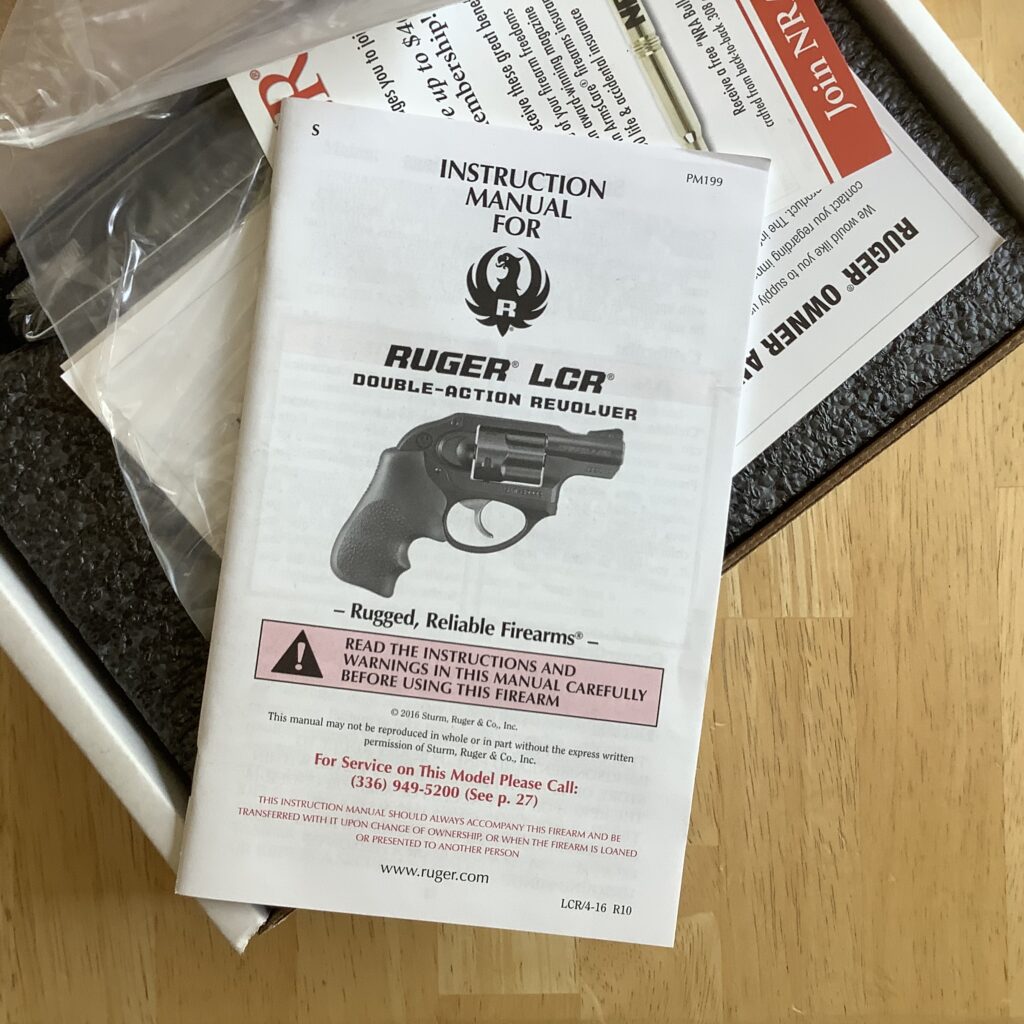
Perspective
We start first with some perspective. Learning how to safely operate a gun is not difficult. Learning how to be a good shooter is harder, and learning how to defend yourself with a gun is harder yet.
This is a process, and it works the same way that all learning does; You take it in small bites, and you don’t expect to start off with running—you have to crawl, then walk, first. If you try to speed, you’ll skip something important, and your house will be made on sand.
So, take the time to do it right, and be patient with yourself as you work through the process. Don’t expect to master everything overnight, because it can’t be done. Think of this like a journey, not a destination.
The roadmap
You probably want to understand where you’re going, so let’s try to break down the essential skills and build a roadmap for your learning. Using the “Crawl, Walk, Run” philosophy, here’s what we would suggest for you:
CRAWL TOPICS
- Firearms safety—the rules you must follow and habits you must adopt to be safe;
- Understanding how your gun works—what do all those controls do?
- How to disassemble, clean, oil, and reassemble your new gun;
- How to safely store and access your firearm;
- Mindset—are you mentally and emotionally prepared to use your gun in self-defense?
WALK TOPICS
- Basic weapons handling—how to efficiently load, unload, and fire your new gun. What to do if you have a malfunction;
- Basic marksmanship—how to reliably hit the target with your gun. Stance, grip, sights, breath control, trigger control–all the fundamentals of marksmanship;
- Basic instruction in the law of self-defense—when does the law allow you to use your gun in self-defense?
- Selecting the right ammunition for your gun—for both training and defensive use;
- Basic tactics for defending yourself and others with your gun;
- How to make the 911 call after a shooting—what to say, how to say it;
- How to interact with the police after a shooting—what to do and say;
(If you plan on carrying your firearm, these will also apply)
- Selecting a carry system for your gun—holster, belt, ammo pouch, off-body alternatives;
- How to safely draw and holster your firearm;
- Learning how to properly conceal your gun—clothing, behaviors;
- Getting your concealed carry permit (if desired / required);
- Additional education on how the laws of self-defense apply outside of the home;
RUN TOPICS
- Mastering the basics of weapons handling. Remember—”advanced” or “expert” shooters are simply the ones who do the basics better and faster;
- Mastering the fundamentals of marksmanship—The shooter’s proficiency improves, and they become more capable of balancing the demands of speed, power, and accuracy as targets get more and more difficult to hit;
- Advanced education in the law of self-defense;
- Advanced education in tactics and the use of a firearm in self-defense, including simulation training and Force-On-Force training;
- Branching out into other types or models of weapons, and attaining proficiency with them.
There are other components to your education and training, but these are the big ones.
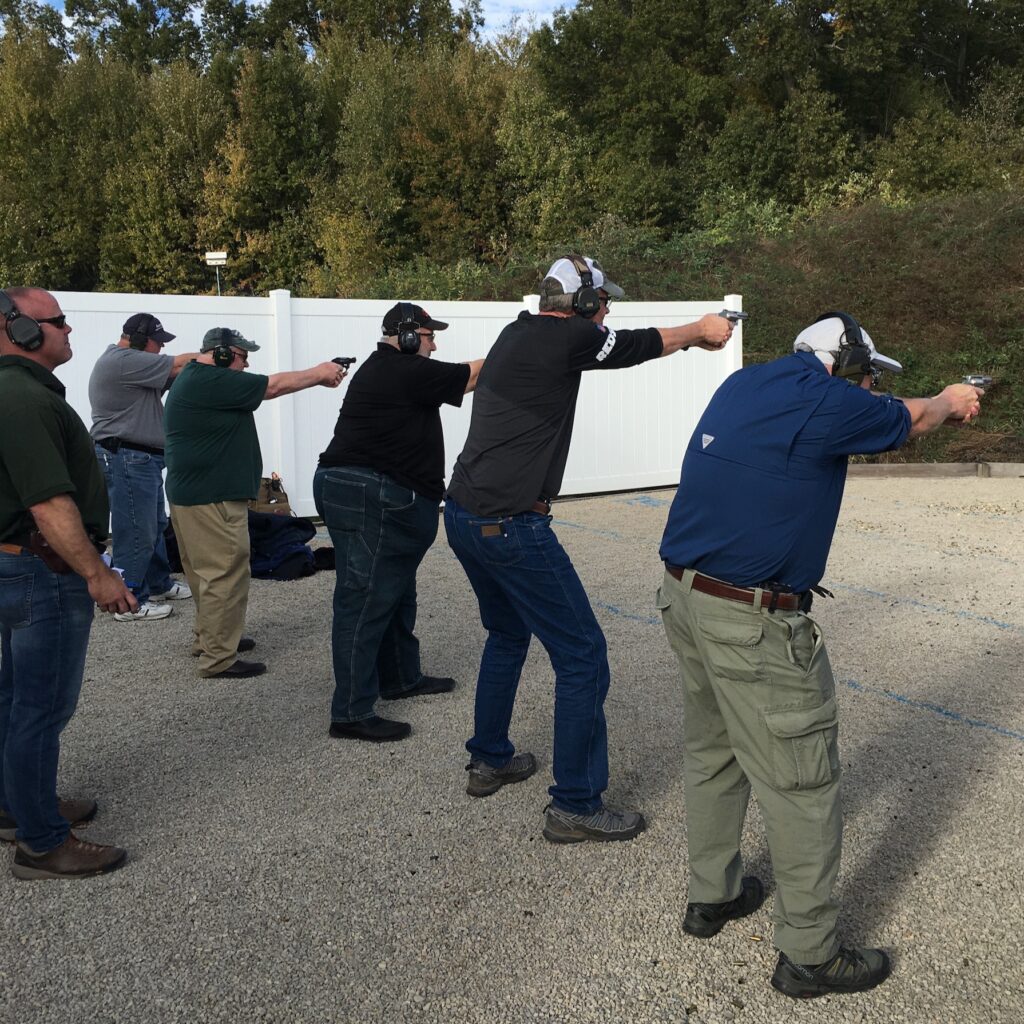
As you can tell, that’s quite a list, and it’s far beyond our ability to address even the tiniest fraction of these topics here. Many people will spend a lifetime chasing these objectives, so it’s important again for you to keep things in perspective—eat the elephant one bite at a time, and be patient with yourself, because it’s going to take some time and effort to march your way through that list. There’s no shortcut to success, here.
The first step–Safety
The first step is easy, though. Your journey to firearms ownership begins with safety. You MUST adopt good safety habits from the very start, to avoid making an error that can cost or wreck a life.
There are many important safety precautions to keep in mind when you’re dealing with firearms, but the “Big Four” that have become the industry standard come to us from one of the world’s most respected schools, the Gunsite Academy:
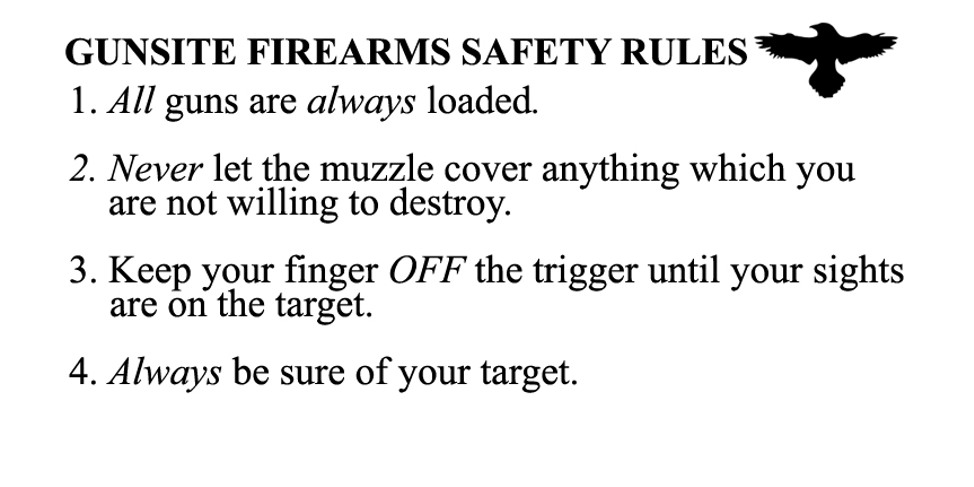 Let’s talk about these in a little more detail.
Let’s talk about these in a little more detail.
- All guns are always loaded. This rule can be confusing for people. It’s important to understand that this rule defines an expectation for your behavior, and is not a simple statement of fact. Can a gun ever be “unloaded?” Yes, it certainly can. You can certainly remove all ammunition from a gun and thus have an “unloaded” gun, so this rule is not a hard and fast statement of fact.
Instead, the rule establishes a desired state of mind. The rule requires you to treat every firearm as if it were loaded, at all times, even if you might think it is not. If you do so, then you won’t make any of the careless or reckless mistakes that can result in someone being hurt.
A number of people are hurt each year with guns that they, or others, thought were “unloaded.” The people involved in these incidents allowed themselves to treat the gun with less respect, less caution, because they thought it was unloaded and therefore was not a risk. They acted carelessly, recklessly, and negligently with the gun because they thought it wasn’t capable of hurting anyone . . . but they were wrong.
The antidote to this kind of thinking is Rule #1. If you act as if “all guns are always loaded,” then there is only one standard of behavior to follow when you’re handling a gun. There is no longer one set of strict rules for a “loaded” gun, and a less-restrictive set of rules for an “unloaded” gun—there is only one set of very strict rules for all guns, and it requires you to treat them as the dangerous tools that they are. This is the safest approach, and it’s the attitude you must adopt to prevent yourself or someone else from making a mistake of the worst kind.
So, all guns are always loaded.
- Never let the muzzle cover anything which you are not willing to destroy. For the new gun owners out there, the muzzle is the open end of the barrel, where the bullet comes out—the big hole at the end of the gun. This habit is vital to the safe handling of a gun, and requires a hyperactive awareness of where it is pointed, which we call “muzzle awareness.”
Muzzle awareness is the ultimate safety net that can prevent a tragedy when all else fails. If you violate all the rules and your gun discharges when you don’t intend it to, you’ll still avoid hurting or killing someone if the gun isn’t pointed at them. As such, you must always practice good muzzle awareness, and insist that others do, too.
Your muzzle must always be pointed in the safest direction, but there are some environments where the “safest direction” might not be intuitive. We’re used to thinking that the ground beneath our feet is solid, but if you’re upstairs in your house, then your family might be underneath, and the bullet from your gun can certainly go through a residential upstairs floor with enough energy to kill those below. The same thing applies to a wall—a bullet could easily travel through a typical interior or exterior wall of a home and hurt someone on the other side, so you have to remember that just because you don’t see someone, it doesn’t mean that it’s a safe direction for your muzzle to be pointed.
Only point your muzzle at the things you are willing to destroy if the gun is fired!
- Keep your finger OFF the trigger until your sights are on the target. Guns fire when their triggers are pulled—that’s how they’re designed. As such, it is vital that you keep your finger off the trigger until your sights are on the target, because that’s the only time you have any assurance that your bullet will hit the desired target if the gun is fired.
New gun owners should be aware that this is one of the easiest rules to violate. Many people—both trained and untrained, experienced and inexperienced–will reflexively put their finger on the trigger at inappropriate times. The gun is designed to make it comfortable and natural to put your finger on the trigger, so resting your finger there is the “path of least resistance.” Additionally, there is a subconscious desire, especially during moments of stress, to “make sure” that the trigger is there and your finger knows where to find it. This so-called “trigger checking” has led to many negligent discharges, and it’s a big reason why you have to build the proper habits from the beginning.
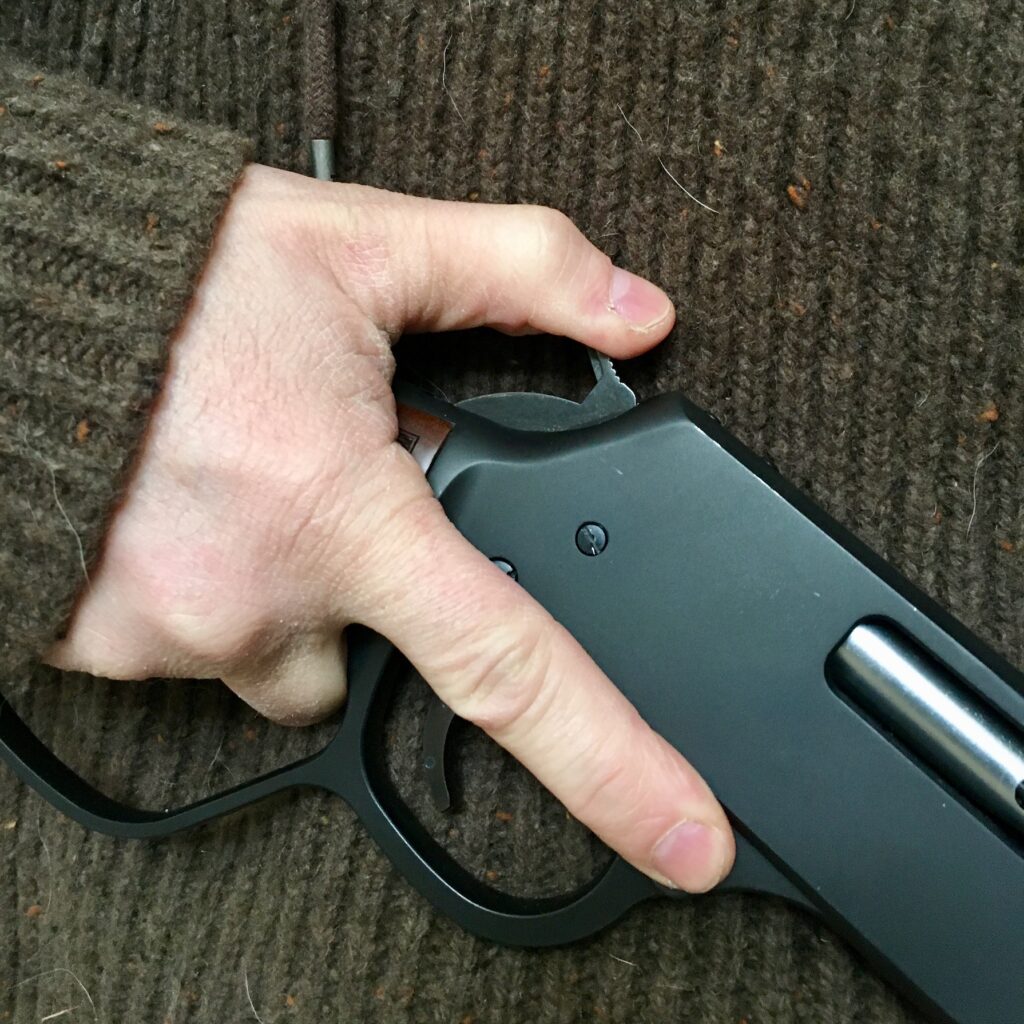
When you’re handling your gun and your sights are not on the target, the proper place for your trigger finger is on the frame of the gun, resting as far away from the trigger as you can place it, without sacrificing your proper firing grasp on the gun. If you get scared, fall down, or get bumped or hurt, you could involuntarily clench your hand into a fist, and if your trigger finger is resting on or near the trigger, it could pull the trigger even though you weren’t intending to. Therefore, keep it far away from the trigger until your sights are on your target, and you’ve made the conscious decision to shoot.
It won’t cause you any delay in firing the gun in self-defense, but it will prevent you from firing it when it’s not safe to do so, yet.
- Always be sure of your target. It’s essential for you to verify what you are shooting at before you pull the trigger. If you have not positively identified your target, then you might shoot at something you never wanted to, such as an innocent person. We never fire at noises, shadows, or unidentified persons or shapes. We only fire when we have verified that our gun is pointing at a legitimate target.
If you do this, you’ll save yourself the heartache of shooting a member of your own family in a moment of panic, as some have done.
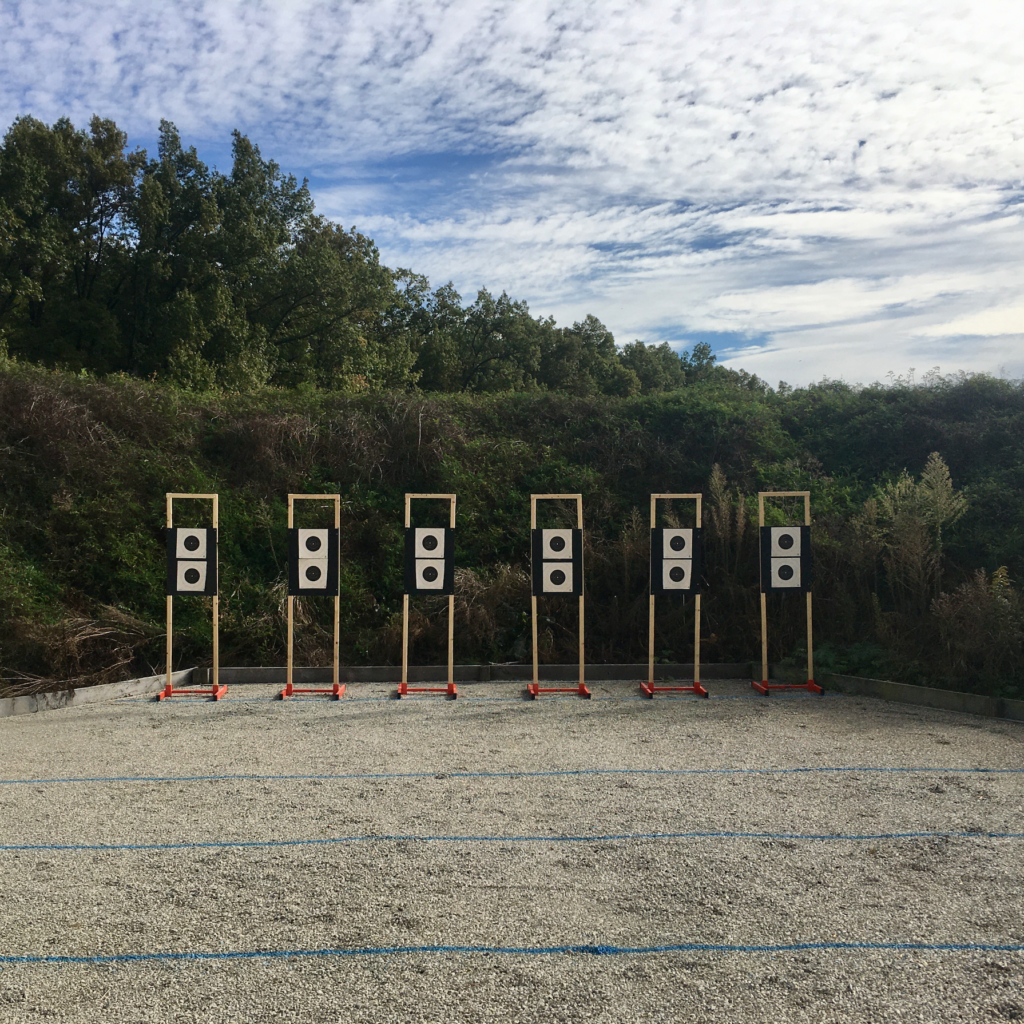
The safety rules are non-negotiable. If you want to be a safe and responsible gun owner, you must adopt these habits and follow these rules at all times. It’s part of the price of admission.
It’s also important to note that the safety rules apply at all times. They are not just administrative, or “range rules,” that you have to pay attention to when you’re handling guns in training or some non-stressful environment. The safety rules even apply when you’re using a gun in self-defense! If you have to use your gun in self-defense, things are already going bad for you, and you don’t need to make life more difficult for yourself. If you hurt yourself or an innocent person while you’re trying to fend off an attack, then your day just got significantly worse!
So, treat the rules as if they apply 24/7/365, because they do.
Suggested Resources
That’s a tall drink of water already, and we’re just scratching the surface. As we mentioned earlier, we just don’t have the time and space to check off all the boxes for you in this article, but we wanted to get you started off on the right foot, and safety is where it all begins.
We presented a roadmap to you earlier, and before we close, we want to give you some resources that will be helpful as you work your way through the list of topics that we suggested. These resources are ones that we personally trust and recommend, as you further your education.
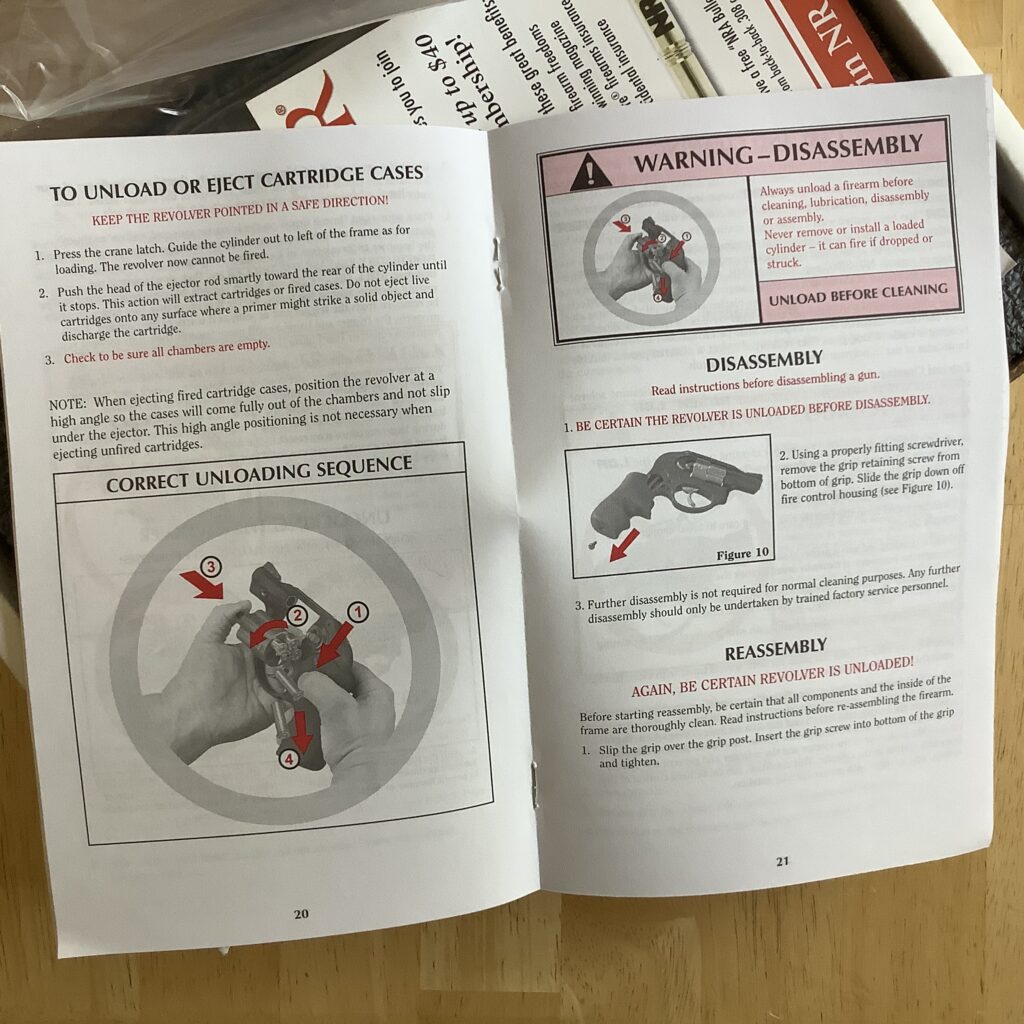
- Your Owner’s Manual. The factory manual that came with your gun will help you to understand how your gun operates, what ammunition to feed it, how to disassemble and reassemble it, how to use it, and how to clean and maintain it. If your gun did not come with an owner’s manual, the manufacturer will give you one for free, if you ask. Additionally, you can usually find an electronic copy on the manufacturer’s website, or in a collection like Steve’s Pages;
- National Shooting Sports Foundation (NSSF) Project ChildSafe. This NSSF program provides safety education and resources for gun owners, and distributes free gun locks as well. Check out their safety quiz, resources for new gun owners, and safe storage resources;
- Armed Citizen’s Legal Defense Network (ACLDN). This group’s pamphlet, “What Every Gun Owner Needs to Know About Self-Defense Law,” is a must-read introduction to the legal concepts associated with using your new gun in self-defense;
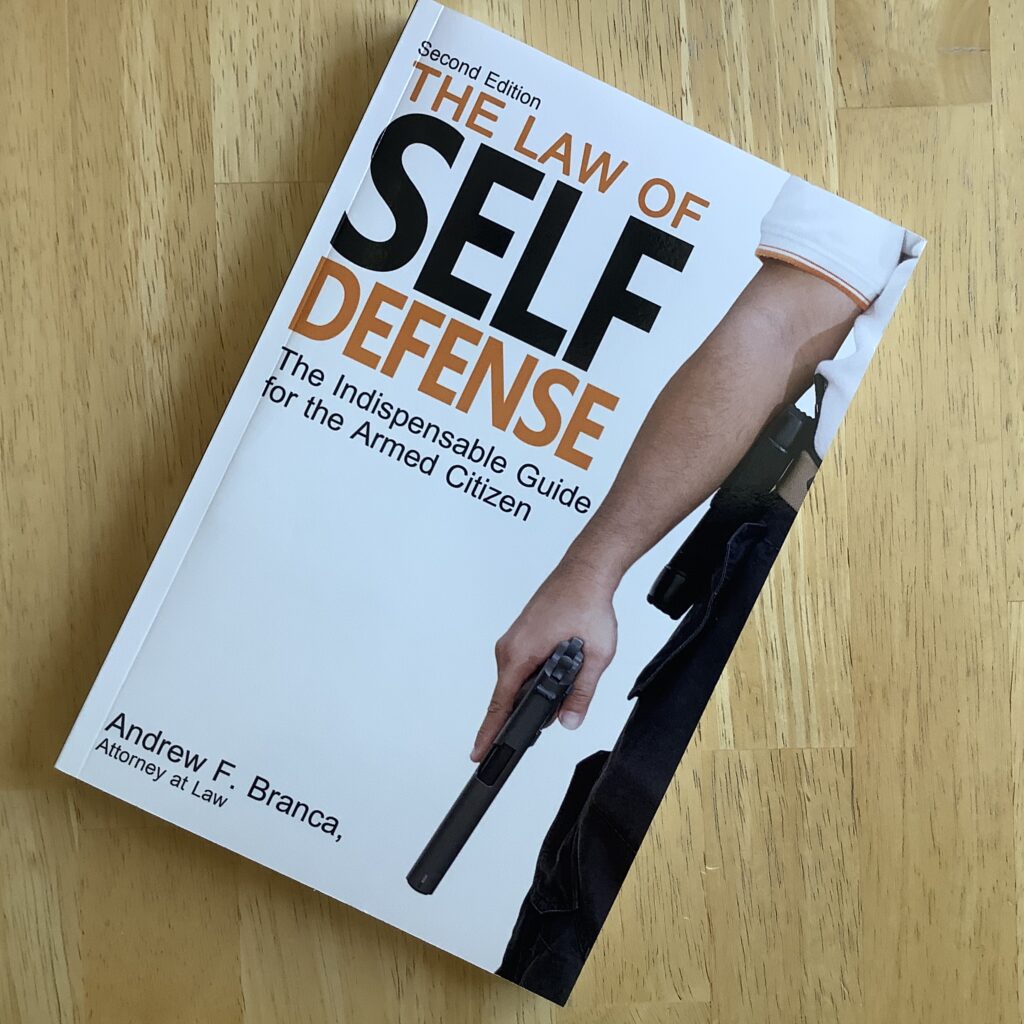
- Andrew Branca’s Law of Self-Defense. Branca’s website and book are essential resources if you want to truly understand self-defense law—and you absolutely need to, if you want to stay out of jail, and maintain your financial, emotional and physical well-being. Also recommended is attorney Steven Harris’ excellent essay about the difference between what the law allows, and what is in your best interest;
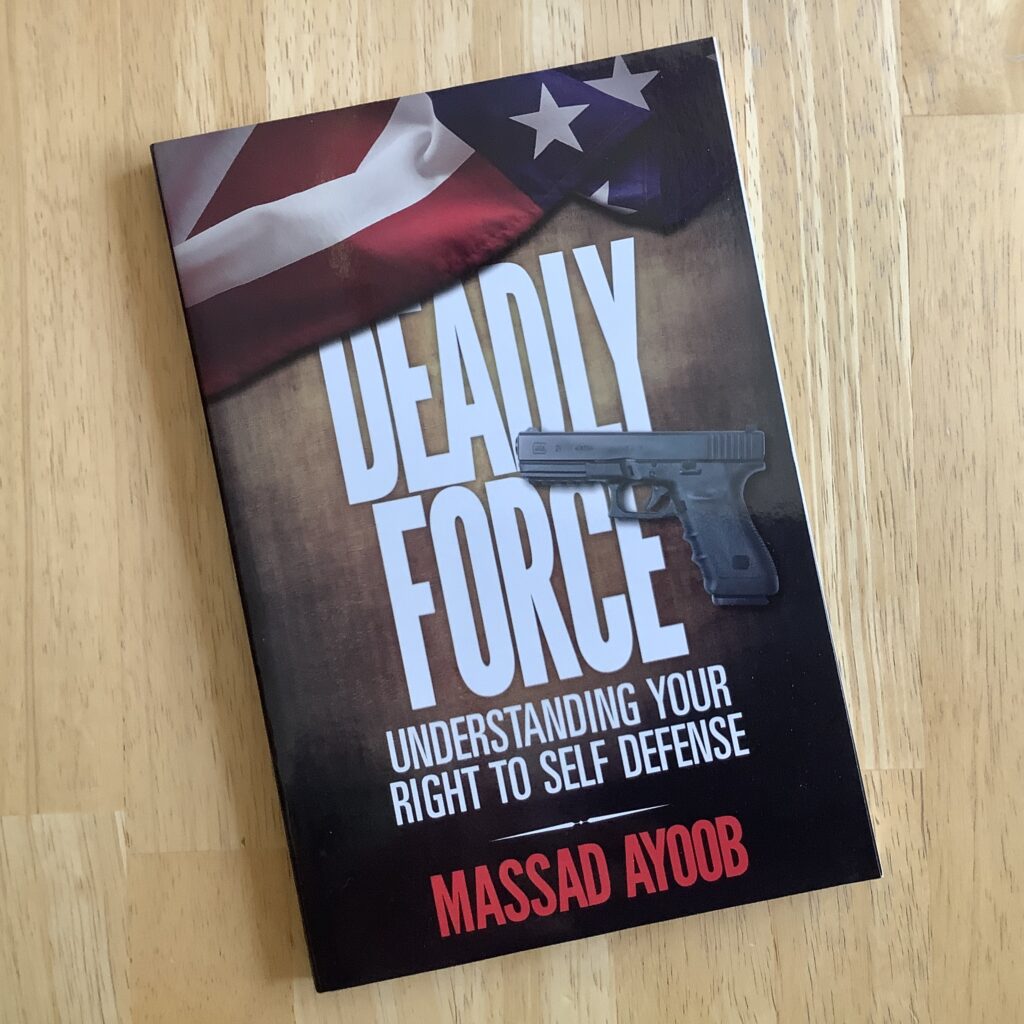
- Massad Ayoob. Mas Ayoob is one of the preeminent trainers in the industry, and the first to give armed citizens the kind of legal training that was formerly reserved for law enforcement officers only. Mas’ book, Deadly Force: Understanding Your Right To Self Defense, ranks right up there with Branca’s, and the chapter titled, “After the Shooting” has some invaluable advice on how to interact with law enforcement after you’ve had to use your gun in self-defense. Make sure to follow his blog as well;

- Grant Cunningham. Grant’s website is packed with excellent information for the new gun owner. We’re particularly fond of his excellent books, which are highly educational and informative, without being too complex for the person who is new to guns. Grant’s blog is likewise an excellent source of information on a wide variety of gun topics relevant to new gun owners. Grant is highly regarded as an instructor as well, and offers a host of excellent training courses;
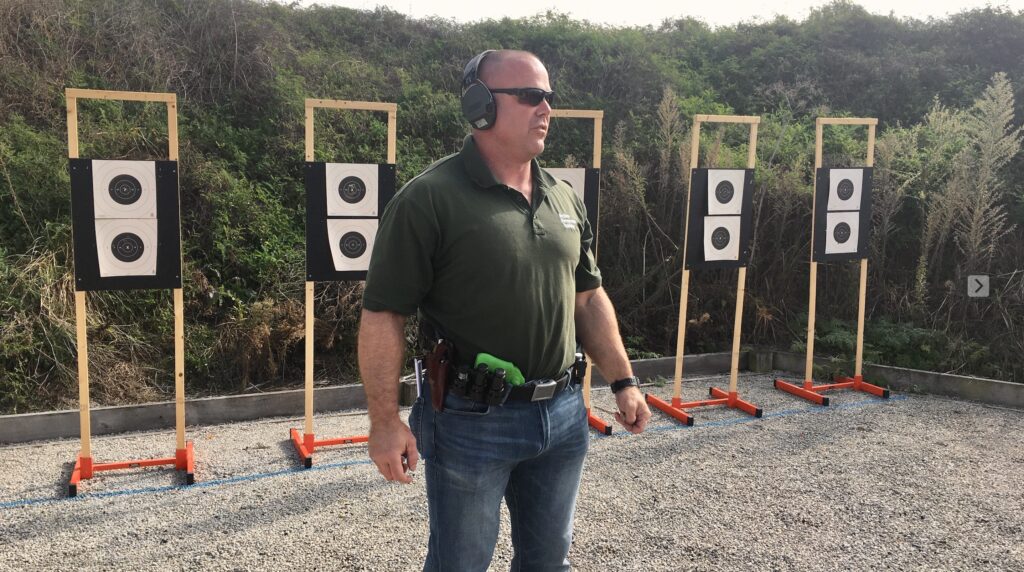
- Active Response Training. Greg Ellifritz is one of the industry’s most well-regarded trainers, and his blog is one of the best free sources of information for the new gun owner, covering everything from tactics to first aid to recommended shooting drills. Make sure to check out his recommended reading list, which is well organized and complete. Greg offers a wide variety of instructional courses, and comes highly recommended from our own Editor in Chief, who has attended several of them and reviewed them here in these pages;
- Gun University’s Gun-101 Program. Gun-101 provides education for new gun owners, focusing on the questions they are most likely to have about firearms, ammunition, and how to use them. Helpful videos and articles will help you understand how to purchase, use, maintain and train with firearms;
- Where to Shoot.org. A project of NSSF, this site provides you with a directory of shooting ranges and gun clubs in your area, to help you find a safe place to shoot your new gun;
- NRA Basics of Pistol Shooting Online Course. This online course will introduce you to the skills that are necessary to become safe and proficient with your new handgun. If you’ve never fired a handgun before, this is a great place to start, because it will arm you with the knowledge you need to be successful, and will give you a good baseline for future training.

You’ll need help
If you combine these resources with our roadmap, you’ll have a good place to start from as you begin your journey as a new gun owner.
Of course, you’re going to need some help along the way. You can figure out the basics of shooting a firearm from a book, video, or online article, but if you really want to develop good habits and technique, you’re going to need a live coach. A good coach will be able to identify the things that you’re doing right, and the things that you’re doing wrong, and will have the knowledge and experience necessary to make corrections and help you improve.
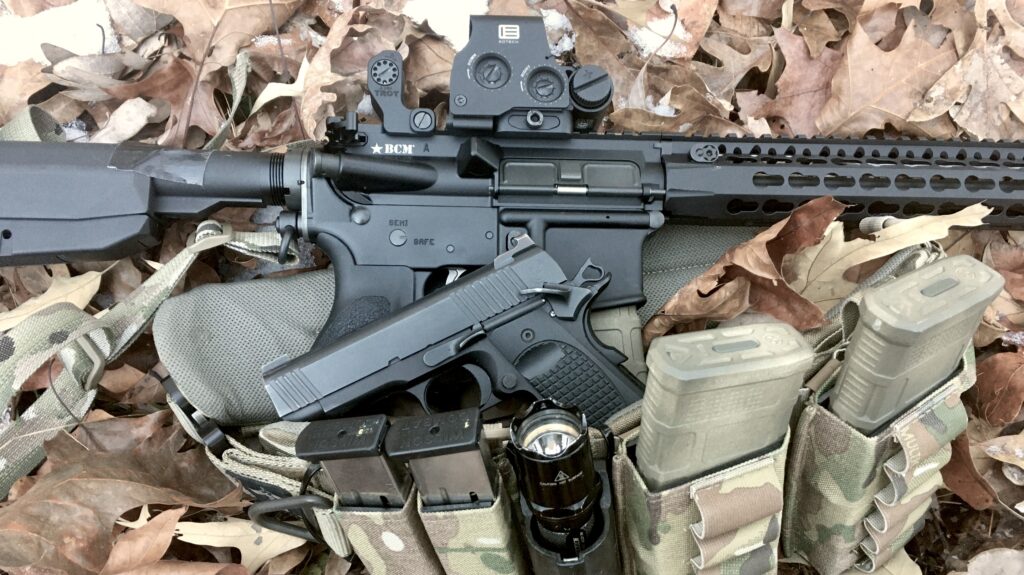
We’ve recommended some excellent ones above—Cunningham, Ellifritz, Ayoob, Gunsite Academy—but we realize that that they can’t cover the entire map, and you might desire to train locally. It might require some searching to find someone like this closer to home, and you might find that you have to extend your radius a bit more than you thought to find a highly-qualified coach. The closest one may not be suitable, after all.
Here’s our recommendation. Dive into the resources we listed above, and learn what you can from them. The more educated you become, the easier it will be for you to judge the worthiness of a particular instructor. If you read one of Cunningham’s books, for example, you’ll have a solid background in what you need to know, and you’ll be a better “shopper” when it comes time to look for a coach or training program.
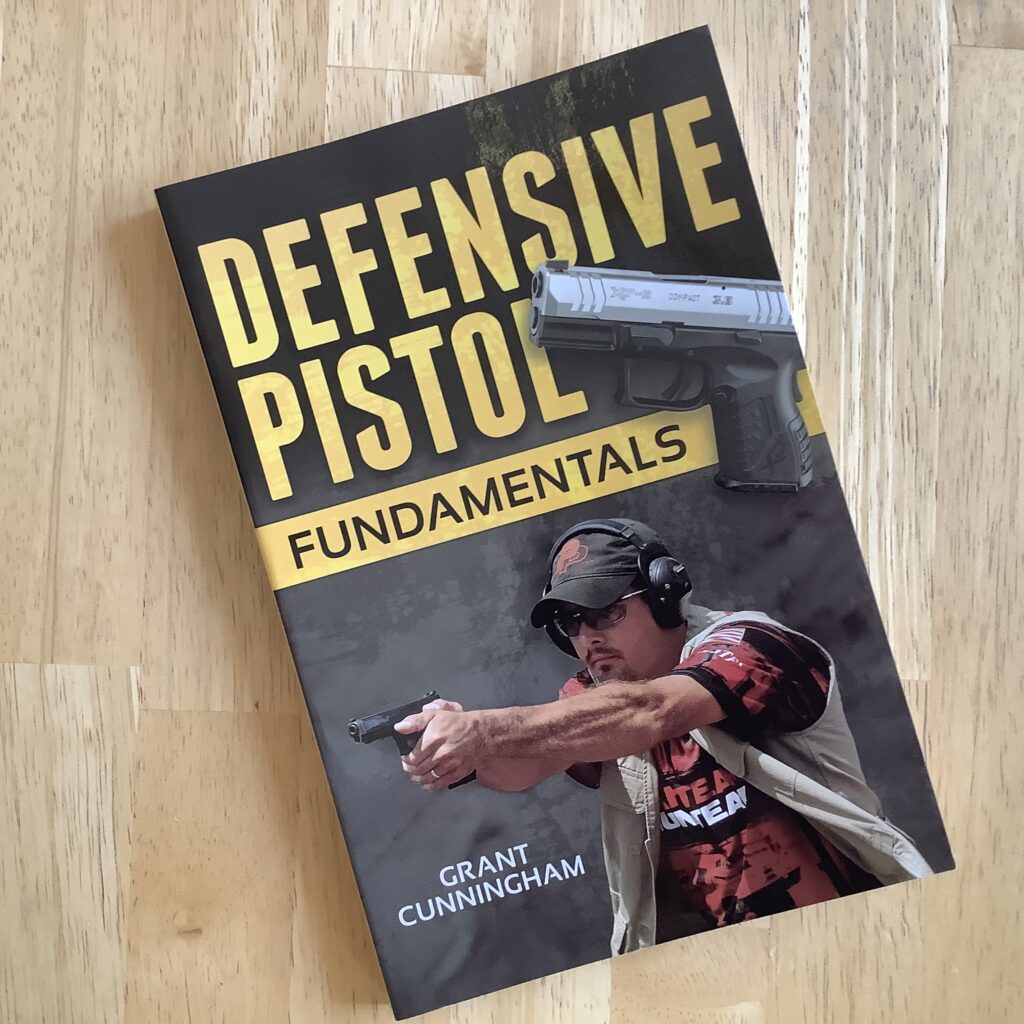
Be safe!
Once again, we’d like to welcome you to the fold. We hope your experience with your new firearm will be enjoyable and safe, and we hope you’ll never have to use it in defense. Be safe on your journey of learning, and don’t hesitate to send us an email if you have questions!


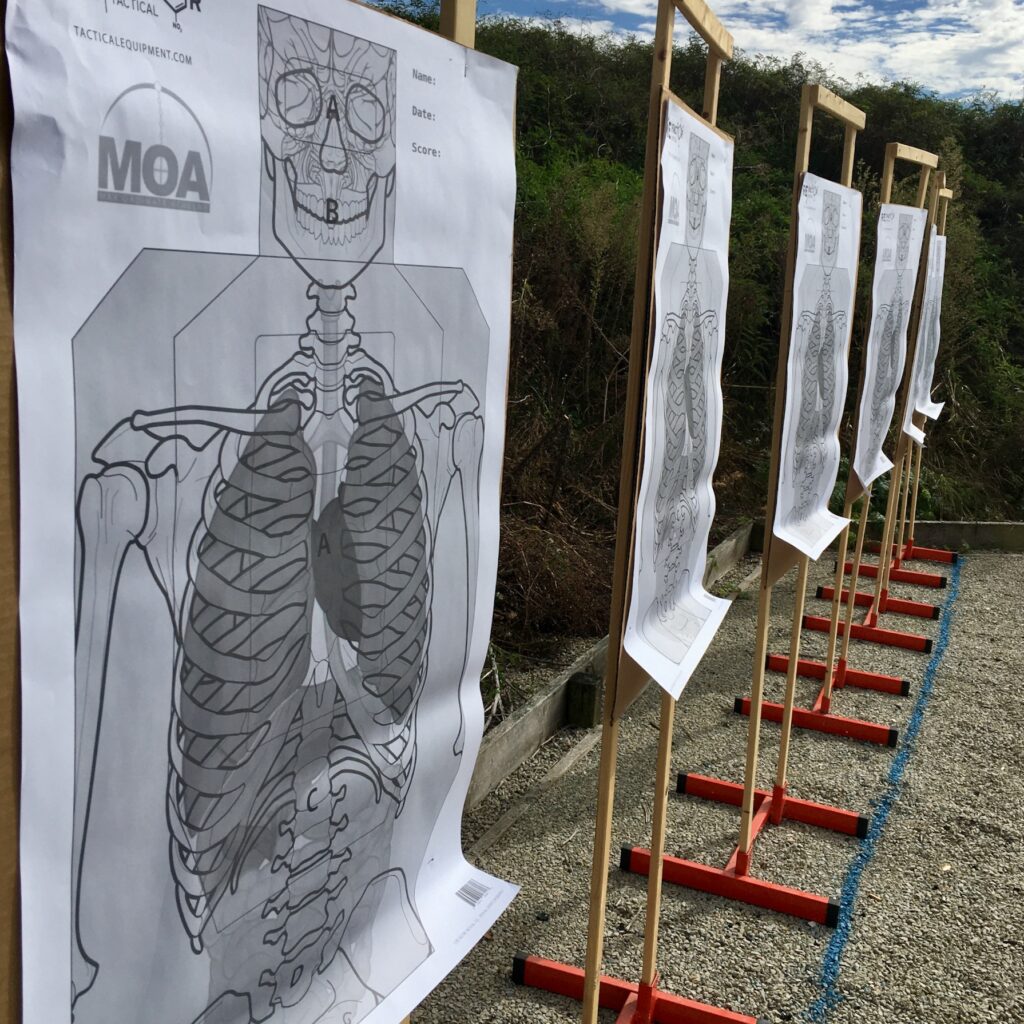
For rural first-time owners of a long arm, Grant Cunningham’s book Protecting Your Homestead is superb. I’ve learned a lot of new things about firing positions and even things as simple as ways to carry the gun, for my AR and my shotgun.
Thanks for the recommendation, Old School Gun-Geek. I am a first time owner of both a shotgun (never fired but loaded) and a .22 LR rifle – fired one day a few times.
WGJ
Enjoy! I’ve long said that a simple pump shotgun is the “revolver of long guns.” Only thing simpler would be a single or double-barrel gun.
Hope yours does well for you. Grant Cunningham focuses on rifles, but his notions about how perimeter defense varies from in-home use would be very useful to anyone employing a scattergun. My Mossberg 600 New Haven now wears a shorter home-defense barrel out of deer season and is getting some target time with buckshot rounds.
Perhaps the most useful item that comes with a new-in-factory-box firearm is the INSTRUCTION manual. As my late grandfather would say: When all else fails, RTFM — Read The F***in’ Manual.
You buy a new car – guess what, there’s an owners manual !! You buy new tools at Home Desperate and you get an owners pamphlet. The new Kitchen Aid mixer comes with a user manual. A new Boeing 737, well, you get a library of manuals and TDSs (think multiple dozens). More questions about how to and what this or that does are answered in owners manuals, user pamphlets, etc., than most folks stop to realize. Sadly, it is the one item in the box that is most often neglected.
Also, I still stumble (unintentionally) across folks who do not realize that if one purchases a gun that is used, without box or papers, that most all instruction manuals are now on the manufacturers’ web sites – and – failing that, you can call them and they will send you one free, at no charge, without cost, postage paid (redundant verbosity at work).
In the meantime, for first time gun buyers: Keep the booger hook off the bang button until you read the book and get some lessons. If you’ve bought your first Boeing 737 – you’re on your own.
: )
Excellent article on a timely topic. Even experienced shooters can benefit from this article. Then, on top of everything else, you throw in some great resource suggestions. Keep up the good work!
Thank you Sir! I agree—ALL of us can benefit from spending a little time thinking about safety habits.
We’re proud to say that Davidson’s / Gallery of Guns asked to feature this article on their own blog:
https://blog.galleryofguns.com/post/a-welcome-to-first-time-gun-owners
Very wise of them. They obviously recognize a well written article by an experienced researcher and author.
WGJ